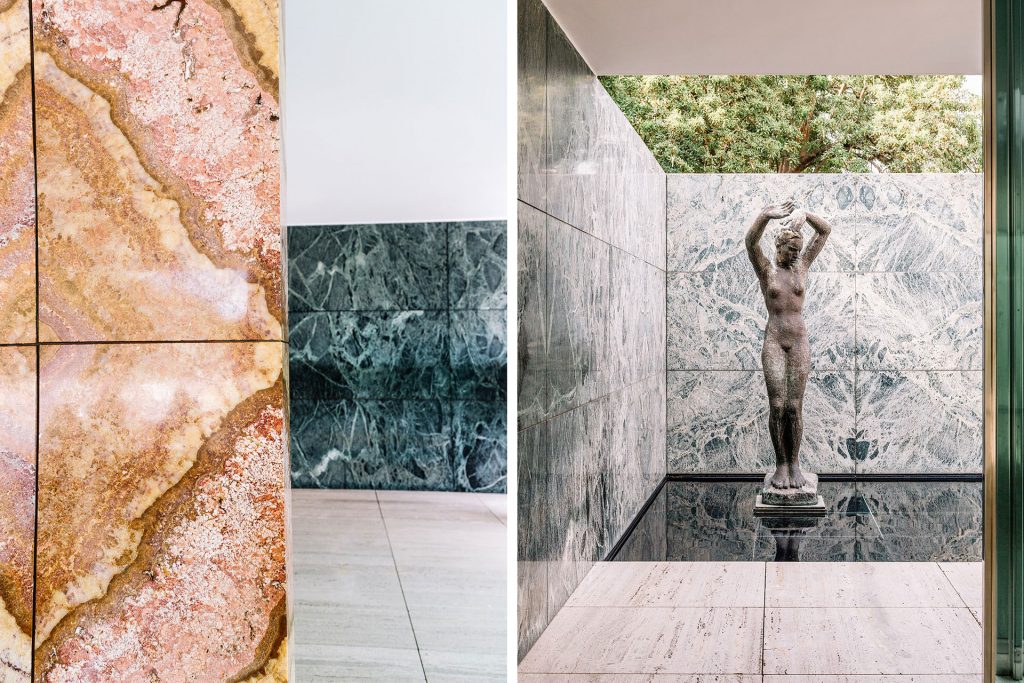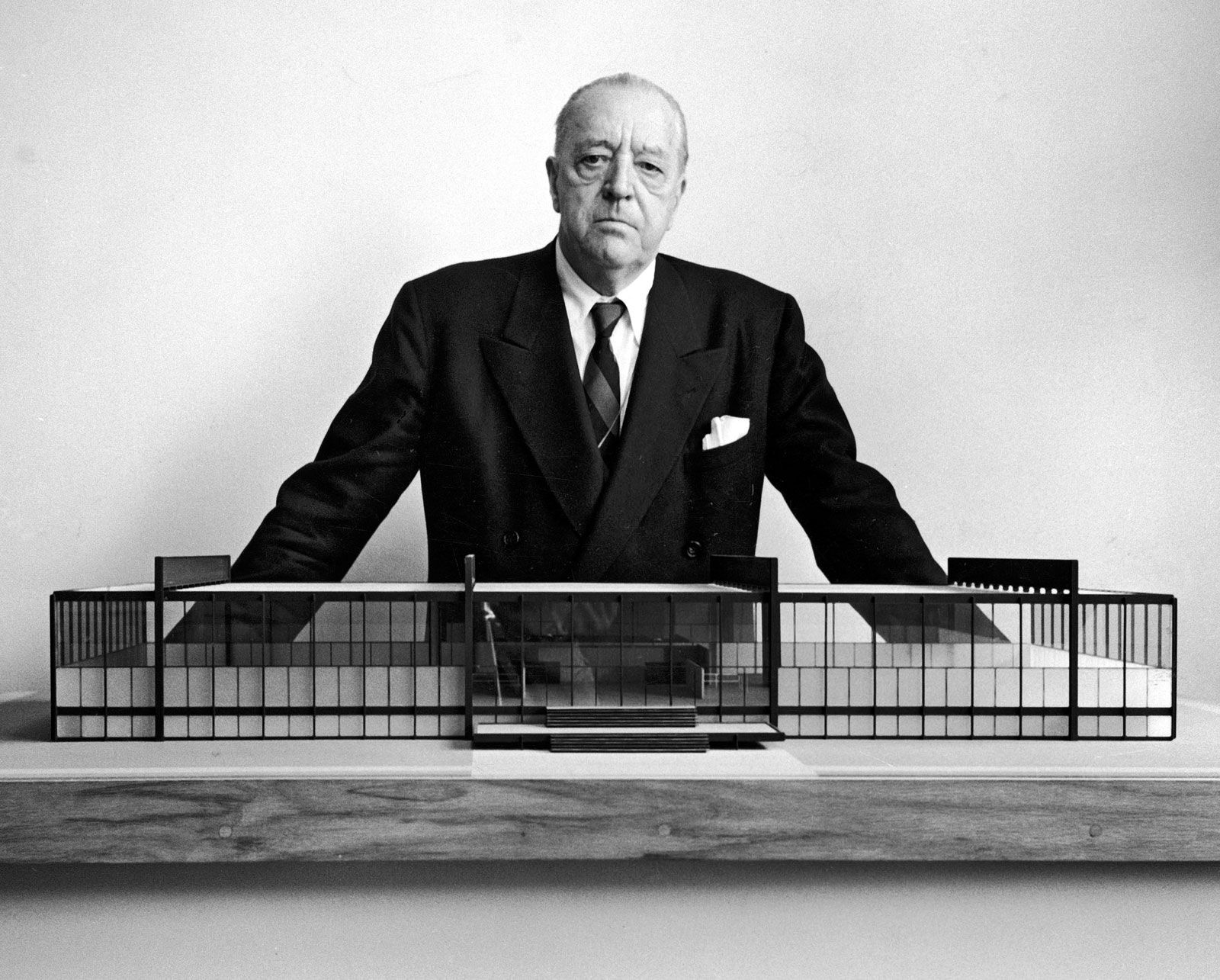Mies van der Rohe & his Barcelona Pavilion
Ludwig Mies van der Rohe
Along with Le Corbusier, Walter Gropius and Frank Lloyd Wright, Ludwig Mies van der Rohe is widely regarded as the as one of the pioneers of modernist architecture. With his "less is more" approach to design, Mies was a pioneering architect during the 1920's and 30's, creating structures that possess extreme clarity and simplicity. Mies' design principles were seen as the gold standard for many generations of modern architecture. In fact, if you run his name through Google search today you'll see countless articles in which architects and designers mention Mies as a design influence. https://twitter.com/UtilityDesign/status/978544970704580608The Barcelona Chair
The Knoll Barcelona chair needs little in the way of introduction. A 20th century design classic, the chair is commonly seen in Hollywood movies, the nicest hotel lobbies and most beautiful interior projects but do you know the story behind the chair? The chair was created for the German National Pavilion (now named the Barcelona Pavilion), designed by Mies for the 1929 'Exposicion Internacional de Barcelona'. With cushions made from 148 separate pieces of leather and a chromed stainless steel frame that is hand buffed to a mirror finish, the Barcelona chair is fit for a king. In fact, Mies designed the Barcelona chair specifically to provide a comfortable resting place for King Alfonso XIII of the Spanish Royal Family during his visit to the exhibition.
 NB: If imitation really is the ultimate form of flattery then the Barcelona Chair has to be at the top of the flattery stakes with the various copies which have been produced over the years. Naturally Utility only sells the original, produced by Knoll Studio, and to reinforce this the signature of Ludwig Mies van der Rohe is stamped into the base of the chair with each chair having an individual production number of identification and authenticity.
NB: If imitation really is the ultimate form of flattery then the Barcelona Chair has to be at the top of the flattery stakes with the various copies which have been produced over the years. Naturally Utility only sells the original, produced by Knoll Studio, and to reinforce this the signature of Ludwig Mies van der Rohe is stamped into the base of the chair with each chair having an individual production number of identification and authenticity.
 Image Source : Knoll International
Image Source : Knoll International
The Barcelona Pavilion
Built from glass, steel and different kinds of marble, the Mies van der Rohe designed Pavilion was conceived to accommodate the Exposicion Internacional de Barcelona's official reception presided over by King Alfonso XIII of Spain along with the German authorities. Following the closure of the exhibition in 1930, the pavilion was disassembled and remained so until 1983 when it was reconstructed on its original location. By this time the pavilion had become a key point of reference not only in Mies van der Rohe's own career but also 20th century architecture in general. The Fundació Mies van der Rohe who now manage the pavilion periodically invite leading artists and architects to temporarily alter the pavilion with installations. A somewhat controversial practise, these "interventions as they're referred to have kept the pavilion as a node of debate on architectural ideas and practices The Barcelona Pavilion is open to visitors with entrance fees starting at 2.60€ for students and 5€ for members of the general public.



 Photography by Lindsay Koffler via Visual House
Photography by Lindsay Koffler via Visual House
Virtual Tour of Mies van der Rohe Barcelona Pavilion
Unable to visit the Barcelona Pavilion in person? Not to worry. Thanks to architectural visualisation studio CL3VER, you can now access the Pavilion through the powers of virtual-reality. The guided tour begins at the foot of the pavilion's steps and gives users 360-degree views of every aspect of Mies van der Rohe's creation, from the green marble and glazing to the ground-to-ceiling glass walls. Source : Cl3VER & Funadacio Mies van der Rohe Barcelona
Source : Cl3VER & Funadacio Mies van der Rohe Barcelona
Time for more? The Story Behind Verner Panton's S Chair | A Look Inside the Aalto Residence | Arne Jacobsen's Most Iconic Designs
-
Designer ProfilesIn conversation with Tom ChungRead More
Tom Chung's design practice blends simplicity, functionality, and context, creating adaptable objects that reflect how people engage with their surroundings. Recently, Muuto introduced a larger version of his Beam Table Lamp, giving it an even bolder presence. Muuto sat down...
-
Designer ProfilesIntercontinental Polymath; The Life And Work Of Isamu NoguchiRead More
One of the most acclaimed sculptors and product designers of the 20th century, Isamu Noguchi was one of the most formidable figures in design in the years following the Second World War. A sculptor by trade, Isamu Noguchi was born...


